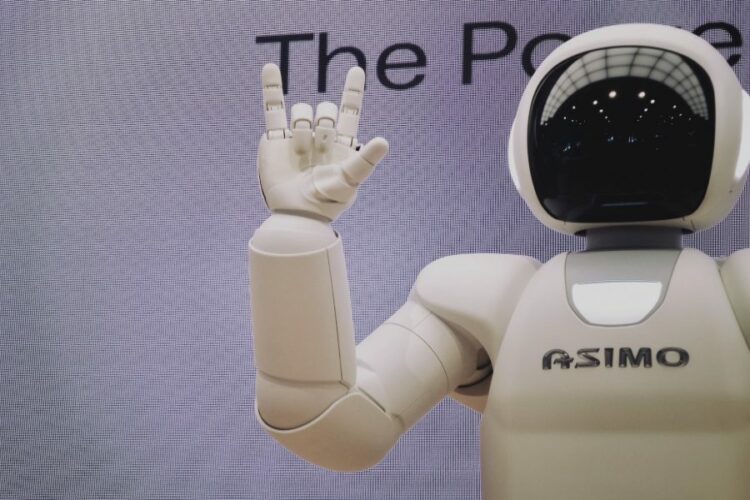When it comes to modern workspaces, the integration of standing desks has become a prominent trend. As people seek ways to enhance their work experience, these workstations have emerged as a solution, promoting health and delivering the latest technology experience. Explore the rise of standing desks and trace their integration in the robotic age.
Standing desks have emerged as a dual force, amalgamating health-conscious choices with state-of-the-art technology experiences. This exploration delves into the integration of standing desks in the robotic age, showcasing their evolution from health support to integral components in the ongoing technological revolution. Let’s examine the intersection of a standing desk and the advancements of the robotic age.
The Rise of Standing Desks in Modern Workspaces
The traditional office setup with fixed-height desks is transforming. Standing desks, also known as adjustable desks, have gained popularity as a dynamic alternative.
When sitting all day long, individuals often feel discomfort throughout their bodies. Standing desks, in turn, offer a solution to mitigate the risks associated with a sedentary lifestyle.
The Integration of Technology in the Evolution of Standing Desks
As the demand for standing desks has surged, so has the integration of technology into their design. This evolution goes beyond mere adjustability; standing desks are now equipped with cutting-edge features that enhance functionality, productivity, and the overall user experience.
The Advantages of Standing Desks
The health benefits of standing desks extend beyond the physical.
#1. Increased Productivity and Focus
Studies have shown that standing desks can increase productivity and heighten focus. The act of standing promotes alertness, helping individuals maintain concentration during tasks.
#2. Improved Posture and Reduced Back Pain
After using standing desks for some time, users often report back and neck pain reduction, contributing to a healthier and more comfortable work experience.
#3. Promoting a Dynamic and Active Work Environment
Standing desks foster a dynamic work environment where employees can choose their preferred positions. This adaptability encourages movement, preventing the stiffness associated with prolonged sitting and contributing to a more active and engaged workforce.
The Evolution of Standing Desks
The concept of “standing while working” dates back to the 18th century, when tall desks served for drafting and clerical tasks. Recently, standing desks have gained widespread recognition as a practical solution for modern office settings.
The transition from fixed-height to adjustable desks marks a pivotal shift in workspace design. Adjustable desks allow users to switch between sitting and standing positions, accommodating diverse preferences and ergonomic needs.
Modern standing desks are not only about elevation. They come equipped with a range of innovative features. From touch-sensitive controls and programmable presets for height adjustments to built-in cable management systems and wireless charging pads, these desks are designed to meet the demands of the tech-savvy workforce.
Designing the Perfect Modern Workspace
If you consider integrating standing desks into your workspace, here are some points to keep in mind:
Ergonomics and Customization Options
Adjustable desks should be customizable to ensure users achieve the optimal ergonomic position for their body type. It includes the ability to adjust desk height, monitor placement, and keyboard positioning.
Integration of Other Ergonomic Office Furniture
While standing desks play a central role in modern workspaces, the overall ergonomics of an office extend beyond the desk. Consideration should be given to ergonomic chairs, lighting, and accessories to create a cohesive and comfortable work environment.
Creating a Productive and Pleasing Workspace
A modern workspace is about functionality and creating a motivating work environment. Standing desks come in various designs and materials. Moreover, they come equipped with tech features as well:
- IoT. The Internet of Things enables desks to connect and communicate with other devices. You can control it through smartphone apps and adjust settings, monitor usage patterns, and even receive health-related insights;
- Health tracking devices. This integration enables users to monitor metrics like step count, calories burned, and overall activity levels, providing a holistic approach to well-being;
- Smart assistant. Smart assistant integration allows users to control desk settings, set reminders for posture changes, or initiate height adjustments using voice commands.
Overcoming Challenges and Concerns
Despite the numerous benefits, there are common concerns associated with standing desks:
Achieving Proper Posture
Users should learn ergonomic principles and be encouraged to make the necessary adjustments to achieve a neutral spine position. To achieve proper posture and ensure balanced work, it is advisable to add anti-fatigue mats and monitor stands.
Dealing with the Learning Curve
Transitioning to a standing desk may come with a learning curve. Users should start gradually, alternating between sitting and standing to allow the body to adapt. Employers can support this transition by providing ergonomic training, promoting proper desk usage, and creating a supportive work culture.
Finding the Right Sitting – Standing Balance
Finding the right balance between sitting and standing is key to preventing fatigue. Encouraging regular breaks, incorporating anti-fatigue mats, and using supportive footwear can lead to a more comfortable standing experience.
Standing desks have emerged as a transformative element in modern workspaces, offering numerous health benefits and increased productivity. Technology integration has elevated standing desks to new heights, providing users with smart, customizable, and connected solutions that bring work routines to new heights.







